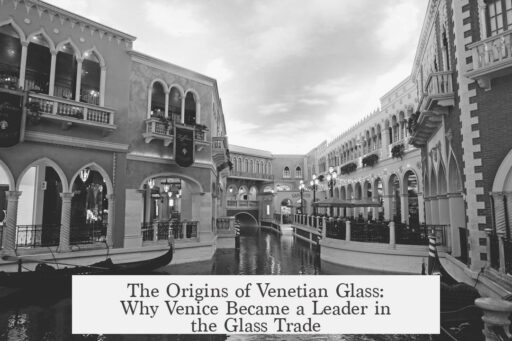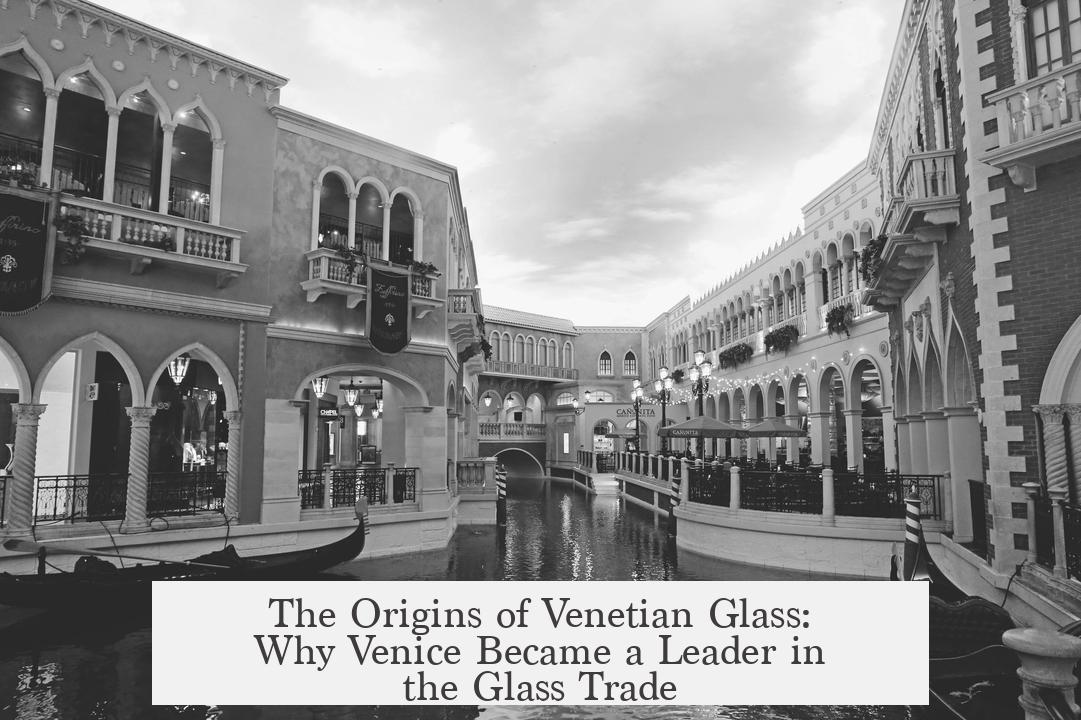Venetian Glass remains famous because Venice’s unique history, geography, and culture created ideal conditions for a thriving glassmaking industry. This prominence began in the early medieval period, grew through savvy economic and social structures, and was sustained by a community of skilled artisans on Murano Island.
Venice’s glassmaking origins are uncertain. Unlike other Italian cities with Roman roots, Venice has little evidence of glass production during antiquity. Early glassmakers likely came from outside, possibly linked to Byzantine or other Eastern Mediterranean traditions. Archaeological finds place glass in the Venetian lagoon as far back as the 8th century, with documentary evidence appearing by the 10th century.
Several factors made Venice special for glass. Venice served as a cultural and economic bridge between East and West during the medieval era. This saturated environment encouraged artistic innovation and the adoption of advanced glassmaking techniques.
- Commercial strength: Venice’s role as a trading hub helped secure exotic raw materials. Merchants facilitated investment in furnaces, expanding production capabilities.
- Geography: Sand from local rivers supplied essential materials, while the lagoon offered water to safely manage potentially deadly furnace fires.
- Relocation to Murano Island: To control fire risk within the city, authorities mandated glassmakers move to Murano. This move concentrated talent and enabled workshop competition and innovation.
A robust guild and regulatory system strengthened the industry. Venice’s guilds regulated artisanal practices under a unique governance model balancing guild autonomy with government oversight. This two-way dialogue embedded glassmaking customs in Venetian law, ensuring quality and order while encouraging collaboration. This model contrasts with other Italian cities where guilds had more independent, less state-integrated authority.
The Murano glassmakers built a global reputation early on. They crafted distinctive “marques,” or brands, which became luxury status symbols across Europe. Venetian trade networks and visiting merchants helped spread the glass’s fame broadly.
Venetian society also continuously supported glassmakers. Wealthy local patrons collected both functional and decorative glass ware, providing steady demand and fostering artistic continuity.
Despite a flourishing history, the industry declined in the final century of the Venetian Republic. Production quantity and quality fell, and internationally renowned glassmakers dwindled. The 19th century brought further challenges from occupation, political upheaval, and population decline.
However, following Italian unification, new investments revived the glass industry. Unlike other Venetian crafts such as textiles or book publishing, glassmaking recovered and continues today. The combination of historical depth, geographical advantage, regulatory innovation, and marketing acumen explains why Venetian Glass remains a world-renowned art form.
| Aspect | Details |
|---|---|
| Origin | Likely Byzantine/Eastern Mediterranean influence, 8th-10th century evidence |
| Economic Factors | Trade hub securing raw materials, investment from merchants |
| Geography | Sand from rivers, water from lagoon for fire control, Murano island relocation |
| Governance | Guilds with state collaboration embedded in Venetian law |
| Reputation | Early branding, widespread European export, local elite patronage |
| Decline & Revival | 19th century decline due to political turmoil; revived after Italian unification |
- Venetian Glass began in the early medieval period with possible Eastern Mediterranean roots.
- Venice’s location and trade connections provided essential raw materials and market access.
- Moving glassmakers to Murano reduced fire risk and fostered a focused artisan community.
- Guilds regulated quality and innovation under a unique Venice-specific governance system.
- Murano glassmakers excelled at marketing, spreading their products across Europe.
- The industry declined in the 19th century but saw revival after Italian unification.



